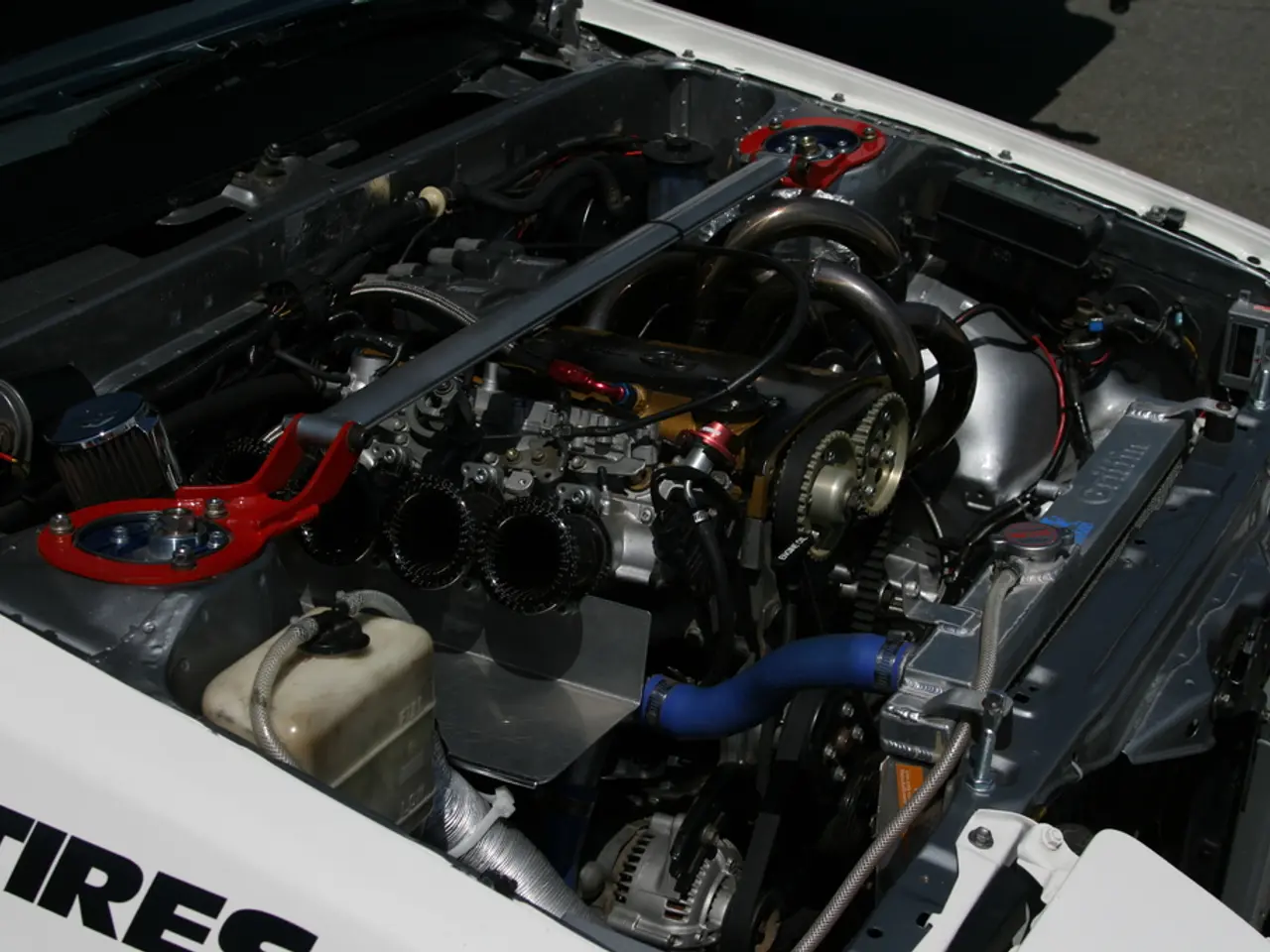Tesla is reportedly staying away from the solid-state battery trend, as suggested by indications from CATL and Panasonic.
In the rapidly evolving world of electric vehicles (EVs), Tesla has chosen a pragmatic approach, focusing on the improvement of lithium-ion battery technology rather than solid-state batteries. This strategy is driven by the maturity, cost-effectiveness, and reliability of lithium-ion batteries in EVs, as well as Tesla's yearly advancements in energy density, faster charging, and lower costs.
Lithium-ion batteries, currently widely used, offer energy densities of 150–250 Wh/kg. In contrast, solid-state batteries, which are still in the early prototype and pilot stage, boast energy densities of 300–400 Wh/kg in lab prototypes. Solid-state batteries also promise faster charging times, as quick as 3-12 minutes for 80% charge, longer lifespans, and reduced fire risks. These properties could nearly double EV range and battery life compared to lithium-ion technology.
However, mass-market solid-state batteries are expected to become practical for EVs around 2027 to 2030. This timeline is based on manufacturers continuing to validate prototypes, test real-world conditions, and scale production capacity. Some early semi-solid-state battery EVs, like the new MG4 variant with manganese-based lithium-ion chemistry, have recently been cleared for sale in China, marking initial steps towards solid-state technology commercialization.
Tesla's strategy reflects a pragmatic approach: it continues to optimize lithium-ion technology now while monitoring and researching solid-state developments that may revolutionize EV batteries later this decade. If Tesla can deliver a 450-mile EV that charges in under 15 minutes using advanced lithium-ion, the functional difference for most drivers compared to a 600-mile solid-state car will be minimal.
Emerging silicon-anode battery upgrades for Tesla could add 20% more capacity without overhauling production lines, translating to more range, faster charging, and lower cost per mile in Tesla vehicles. New battery advancements have already given the average EV a range close to what a Tesla Model 3 Long Range offers today.
In summary, Tesla's focus on lithium-ion battery technology and its pragmatic approach to solid-state battery development positions the company well in the EV market. While solid-state batteries are promising for the future, they are unlikely to replace lithium-ion batteries in Tesla’s EVs before the late 2020s.
| Aspect | Lithium-ion Batteries | Solid-State Batteries | |------------------------------------|--------------------------------------------|----------------------------------------------| | Current Status | Mature, widely used, cost-effective | Early prototype and pilot stage | | Energy Density | 150–250 Wh/kg | 300–400 Wh/kg (lab prototypes) | | Charging Time | Typically 30-45 minutes to 80% | As fast as 3-12 minutes to 80% | | Cycle Life | 1,000–2,000 cycles | 2,000–5,000 cycles | | Safety | Liquid electrolytes, fire risk | Solid electrolytes, highly stable, safer | | Commercial Availability | Mass production and sales worldwide | Expected 2027-2030 for mass-market EVs | | Cost and Manufacturing | Lower cost, mature supply chains | High production cost, limited scale and maturity |
- Tesla's approach in the manufacturing industry leans towards optimizing lithium-ion battery technology, a mature solution, while keeping an eye on the evolution of solid-state battery technology for potential future enhancements.
- Lithium-ion batteries, with energy densities of 150–250 Wh/kg, are currently the go-to solution in the energy sector for electric vehicles (EVs), offering a viable solution in terms of cost-effectiveness and reliability.
- In the world of finance and wealth-management, Tesla's strategic choice to focus on lithium-ion technology now can potentially translate to competitive edge in the business sector, as the company aims to deliver advanced lithium-ion batteries that can charge faster, offer more range, and cost less per mile.
- As the sports industry continues to evolve, especially American football, with leagues like the NFL and NCAA Football, optimizing EV batteries for faster charging times is crucial, as it can significantly improve the fan experience by reducing waiting times for games and events.
- Data-and-cloud-computing and technology play key roles in the development of both lithium-ion and solid-state batteries, as testing, validating, and scaling production capacity require robust digital infrastructure and artificial-intelligence-driven insights.
- Personal-finance strategies take note as Tesla's focus on lithium-ion batteries can improve the total cost of ownership for EVs, making them more accessible to more people, leading to broader adoption and growth in the industry.
- The evolution of EV batteries, whether lithium-ion or solid-state, impact several sectors beyond the automotive industry, including energy, finance, sports, and technology, as their development can either disrupt the status quo or improve the efficiency of each industry.
- As solid-state batteries approach mass-market readiness by 2027 to 2030, it will be essential to monitor their progress in terms of cost-effectiveness, safety, and energy densities to ensure they live up to their promises and provide a viable alternative to lithium-ion batteries in the EV industry.




